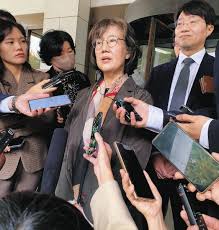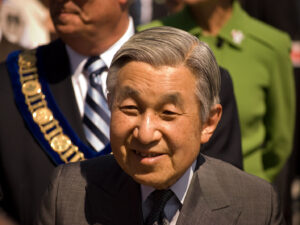

Japanese anime such as “Sailor Moon,” “Naruto,” “Blade of the Oni no Kai,” and “Pokemon” are very popular not only in Asia but also in the West. Many young people who have come to Japan and are impressed with Japan often cite such things as “trains are on time” and “the streets are clean. What a joy to hear that young people who have fallen in love with Japan in this way are now doing research on Japan. However, at the “Japan Studies Conference” that Michiko Kurita, a journalist living in Belgium, attended, “research results” that exceeded her imagination were presented. Below is a report of what Ms. Kurita saw and heard.
More than 1,000 researchers fluent in Japanese
This summer, more than 1,000 researchers from all over the world gathered at a university in Ghent, the ancient capital of Belgium, where I live, and they were so fluent in Japanese that I could hardly believe my ears. It was the first time in four years since the Corona disaster that I was at a face-to-face conference organized by the European Association for Japanese Studies (EAJS). I have met many scholars of Japanese studies over the past 30 years, and I am always amazed at the breadth and depth of their understanding of Japan and their love for Japan. They have visited Japan many times, lived in Japan for many years in total, read Japanese newspapers and magazines on a daily basis to the extent that they may be more than the average Japanese, and have cultivated a close network of people and friends that they call their “Japanese family”. EAJS was established in 1973. In the past, Japanese Studies (Japanese Studies) focused on history, literature, art, and traditional performing arts. Many scholars were pure literature scholars or artist types. Later, during the period of double-digit economic growth, Japanese-style management was gaining popularity, and themes such as business administration and organizational theory increased. After the bursting of the bubble economy, Japanese anime came into the limelight around the world, and bookstores were lined with “MANGA,” dramatically transforming the way people around the world became immersed in Japan. In Belgium, “Pokemon”, “Naruto”, and more recently “Oni no Kai” (but as “Demon Slayer”) are very popular, and there are not only cosplay events and stores specializing in manga, but even goods stores with signs that look like they are in Japanese. With more and more young people falling in love with Japan in this way, I expected to see a focus on “pop culture” in Japan studies.
I was surprised to find an array of social issues that seemed to reflect the current state of Japan.
I was taken aback by the list of more than 200 workshop topics. I was almost under the impression that I was looking at Japan’s liberal media, with topics such as “The Assassination of Former Prime Minister Abe and the Former Unification Church,” “The Media Fueling Racist Behavior,” “Undocumented Immigrants and Immigration,” and “The Sluggish Political Participation of Young People and Silver Democracy. These young scholars of the imado generation are watching Japanese social phenomena in real time! They are not just glorifying old-fashioned haiku, Noh, kyogen, the once-dominant Kanban, just-in-time, anime, and cosplay. If you ask the average European, it is true that many people are still drawn to the “nice” image, praising the Japanese as “kind and tolerant” and “Japan is a rich high-tech nation. But then I realized. It’s not good! The young, cutting-edge researchers here are completely blind to the current state of Japan! I thought. According to a mid-career scholar living in Europe who is in a position to mentor young scholars, “social issues” have been a rapidly growing research topic in Japanese studies since “around the 2010s. As Yasukuni, comfort women, and the Zaitokukai group were reported in the foreign media, graduate school students began to take an interest in discrimination, hate, divisiveness, and the rightward shift. Among them, vocabulary such as Nipponkaigi, morikake sakura, and henoko are commonplace. Young people in their 20s and 30s are the “millennial generation” who entered the world of Japanese studies as children, attracted by Japanese pop culture such as manga, anime, games, and cosplay. Many of these students went from “I love Japan” to learning Japanese, studying abroad to immerse themselves in Japanese society, and making many Japanese friends. They were right in the middle of the “I love Japan” movement. Some of them say that their image of Japan, which they had longed for, crumbled when they were bombarded with discriminatory words on social networking services from “Netoyo” and “PAYOKU”. Some have even seen the backs of many graduate students and fellow researchers who have woken up from their passion for Japan and left the country. Nevertheless, we asked them about the inner thoughts of those who are still researching Japan as a theme.
Ukrainian woman who encountered the Great East Japan Earthquake
1) Olena studies Ukrainian feelings among Japanese people manipulated by false information by Russia ———- Olena, who grew up close to Chernobyl as a Ukrainian, came to Japan to study in 2010. Since she was a child, she was familiar with Matsuo Basho and Ishikawa Takuboku from her mother’s bookshelf and majored in Japanese literature at Kiev University. She moved from Ukraine to Germany to pursue a doctorate in Japanese studies. I want to study in Japan! In March of the following year, after finally fulfilling her dream and studying at the University of Tsukuba Graduate School, she was struck by the Great East Japan Earthquake and experienced the Fukushima Daiichi Nuclear Power Plant accident. Ibaraki Prefecture, where she lived, is adjacent to the southern part of Fukushima Prefecture. Tsukuba City was also hit by a tremor with an intensity of just under 6 on the Japanese seismic scale. She grew up in Europe, where earthquakes are rare, so this was a terrifying experience for her. She was moved to see Japanese people living so calmly and with mutual respect for each other in the face of such a major earthquake and nuclear accident, and she completely trusted and obeyed the Japanese news and government directives. At the same time, as “one of the few scholars who experienced two major nuclear accidents, Chernobyl and Fukushima,” she decided that her doctoral dissertation would focus on how Japan could use the accidents as a turning point to move away from nuclear power, and what role the media could play in this process. I received information and images of the meltdown via Europe, but it was not until much later that I was informed of it in Japan. He realized, “Even in Japan, it is not always possible to obtain detailed information about the nuclear accident. Rather, I returned to Europe thinking that it would be better to follow the information and media in Japan from Germany and look at the big picture. In Germany, the nuclear accident in Fukushima led to the decision to “phase out” nuclear power. I believed that, similarly in Japan, once nuclear power plants were shut down nationwide, they would never again be operated, and the shift to renewable energy would accelerate. However, after waking up from the initial state of shock, it seemed that Japanese society was losing the momentum for change by the day. The media increasingly argued that “Japan lacks (fossil) resources and renewable energy is too expensive, so nuclear power is unavoidable,” and Japanese friends and acquaintances began to repeat “Shoganai” to each other.
With Russia’s invasion of Ukraine, Japanese social networking sites…
At the end of February 2022, more than 10 years after returning from Japan, an event occurred that changed the theme of my doctoral dissertation. Suddenly, Russia invaded her native Ukraine. Olena began collecting and analyzing tweets in Japanese with “#Ukraine” and social networking sites related to the invasion of Ukraine. The project included semantic categorization and quantitative analysis, as well as analysis of the source of the messages and who was sending them. Fluent in Ukrainian, Japanese, and German, as well as Russian and English, Olena is able to understand the information that the Russian authorities have begun to spread around the world on social networking sites in a variety of languages. For the Japanese, the Russian authorities spread information in Japanese, but it was soon clear that the content was in fact almost identical and the arguments were the same as in other languages. In the Japanese SNS space, which was initially sympathetic to Ukraine, it was observed that as the Russian spread of information increased, the number of posts with anti-Ukrainian and pro-Russian content increased. Mainstream media would be less directly affected by information operations. But to begin with, Japanese journalism lacks primary information from local Ukrainian sources and the Ukrainian government. Japanese people, who are not accustomed to being suspicious, seemed to be very vulnerable to strategic information guidance by social networking sites, if they had the appearance of doing so. Olena’s research also shows that the pro-Russian propaganda spread by the Russian authorities overlaps remarkably in content with the conspiratorial claims made by the new right-wing media and pundits that have sprung up over the past decade or so. I was surprised to learn that part of the theme of Olena’s doctoral dissertation is to examine how disinformation and conspiracy theories in Russia are strongly influenced and used by some politicians. For example, Muneo Suzuki (then a member of the Restoration Association of Japan), who recently made news by visiting Russia, where a travel advisory had been issued, sent out discourses such as “The U.S. aims to enrich the Western arms industry by deliberately prolonging the fighting in Ukraine. This exactly coincided with what the Russian authorities had been spreading on social networking sites for some time.
Fascinated by Japanese culture and karate…
Olena became fascinated with Japan through Japanese literature she found on her mother’s bookshelf. At the same time, she was exposed to the Japanese spirit through KARATE. Olena then became familiar with pop culture, such as manga and anime, as a millennial fan of Japan, and after visiting Japan several times since her year abroad, she is now addicted to Japanese ceramics. When asked, “Who is your favorite ceramic artist?” He readily gave me names I did not know, such as Shoji Hamada, Jun Isesaki (Saki is originally Tatsusaki), Shinobu Hashimoto, Taichi Abe, Aya Ogawa, and Fumihiro Tamura (……). He is currently busy finishing his doctoral dissertation. I love Japan,” he said. But when you live in a rich and peaceful country like Japan, you get used to it and lose the desire to challenge yourself to improve society! I think we lose the will to challenge ourselves to improve society. There are so many things we can do to improve the social status of women and the human rights of various minorities, ……,” Olena said with a sigh.
Michiko Kurita, Gendai Business











